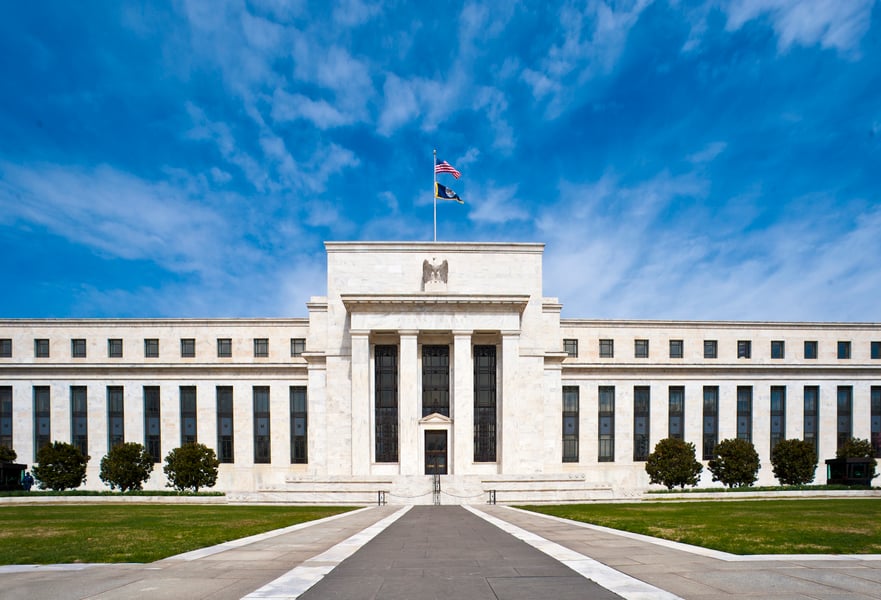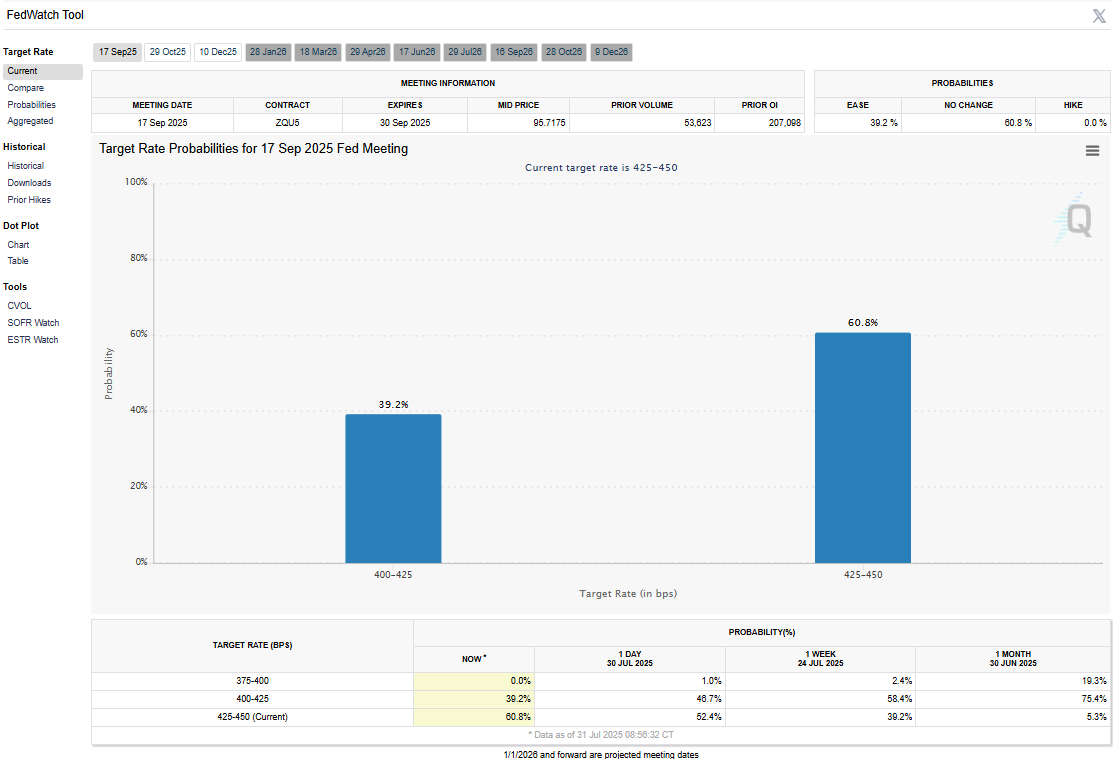

"We want to do that efficiently."
Fed Chair Jerome Powell's comment during his news conference, following the Fed's announcement that rates would remain steady for the time being, underscored his concern of cutting rates only to have to raise them again later. "That's inefficient," Powell said. Even as the next meeting in September may yield different results from the Fed, the announcement was largely expected.
President Donald Trump felt otherwise. He notably has publicly critiqued Powell and the Fed's choices on keeping rates steady, while Powell has refused to engage in response. Trump's nickname of "Jerome 'Too Late' Powell was again invoked, and Trump asserted the decision is "costing our country trillions of dollars," he wrote on the Truth Social platform. In addition to the invectives, Trump also announced a number of tariff deals and demands, including India, South Korea, Thailand, and Cambodia.
Forecasts lean toward rates remaining steady again in September, but the chance of a rate cut is more probable.

Economists' reaction to yesterdays Fed news was more muted, but many expressed surprise at the rarity of two Fed members dissenting from the majority.
“As expected, the Federal Reserve held the federal funds rate steady at 4.25–4.50% for a fifth consecutive meeting. The decision was not unanimous, with Governors Bowman and Waller dissenting in favor of a 25bps cut, a development well-telegraphed ahead of the meeting and now confirmed.
The statement featured a modest downgrade in the Fed’s economic assessment. In June, they wrote that economic activity had “continued to expand at a solid pace” while today the tone was more cautious, stating that “economic activity moderated in the first half of the year”. The Committee continues to characterize inflation as “somewhat elevated,” but acknowledged persistent upside risks, particularly from tariffs and fiscal dynamics.
For the first time since 1993, two members of the Federal Open Market Committee (FOMC) dissented from the majority. (Full disclosure: a single dissent has been more common.)
Not surprisingly, committee members Bowman and Waller wanted to cut rates by a quarter point but the majority prevailed. To wit, the committee made no changes to the federal funds target rate. The committee pivoted to a slightly more dovish position with the view that economic conditions “moderated in the first half of the year.” This paves the way for a cut at the next meeting in September.
Bottom Line: The rate-setting committee has set the stage to take action at the next meeting. If economic conditions weaken, the committee will likely cut rates by a quarter point in September.
It is an exceedingly rare occurrence when two Fed governors dissent at an FOMC meeting, but it was the most well telegraphed dissention ever at today’s FOMC meeting. The driver of the dissension was about the timing of rate cuts, not the direction of policy adjustments. Not a big deal. The real impact of the dissenters was to pull Powell toward the dovish camp for September. That was evident in his press conference and FOMC statement, where the Fed pointed out that the economy is slowing, and uncertainty remains elevated.
In the monetary policy vs. fiscal policy (tariffs, taxes, and spending) dynamic, the markets think the latter is more important – I agree. Barring any major surprises with the July or August employment reports, the Fed will cut policy rates in September. That meeting will have fireworks; today was just sparklers. As expected, there will be a minimal market reaction.
For the first time in 28 years we had two Governors dissent and markets barely budged when the statement was released at 2pm, because both of the Governors voting to cut rates today were widely expected to do so.
In addition, despite the Fed statement giving little new information to investors, Chairman Powell dropped some hints in his press conference that a rate cut was more likely at the next meeting in September, saying “most measures of longer-term expectations remain consistent with their 2% inflation goal” and that a reasonable assumption is that inflation from tariffs will be “short-lived, reflecting a one-time shift in the price level.”
We expect the stock market to keep moving higher in the absence of a sharp increase in unemployment or a significant rebound in inflation, especially as corporate profits continue to surprise to the upside.

"We continue to feel confident about our ability to capture 90%," LPL CEO Rich Steinmeier told analysts during the firm's 2nd quarter earnings call.

It's the mega-RIA firm's third $1B+ acquisition in just three months.

The deal marks a strategic entry into private asst markets for the ETP, ETF innovator.

Wall Street leaders propose ways to monetize the mortgage giants.

Changes in legislation or additional laws historically have created opportunities for the alternative investment marketplace to expand.
Orion's Tom Wilson on delivering coordinated, high-touch service in a world where returns alone no longer set you apart.
Barely a decade old, registered index-linked annuities have quickly surged in popularity, thanks to their unique blend of protection and growth potential—an appealing option for investors looking to chart a steadier course through today's choppy market waters, says Myles Lambert, Brighthouse Financial.
